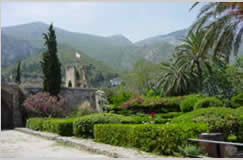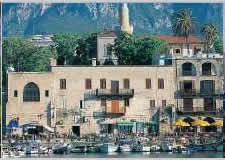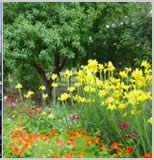|
Since 1992, Marine Turtle Research Group, in conjunction with the Society for the Protection
of Turtles in Northern Cyprus and the Department for Environmental
Protection, has been undertaking an annual survey, recording the turtles
activity during the summer months. In the company of the team at Alagadi
Beach (30 minutes drive from Kyrenia) you can share this unique event.
Just before sunset you join the students at their base, "The Goat Shed" at
Alagadi. First you are given information about the turtles and the
project, and then, when darkness falls, you will be taken down to one of
the two Alagadi bays. There you will wait while the students survey the
beaches. As soon as a female has begun to lay, you are, in silence,
allowed to approach the nesting place. (No photoflashes are allowed at
this important time.) And there, before your eyes, you can witness this
one hundred million year old wonder, as soon as after the other these
mother-of-pearl shimmering eggs, the size of table tennis balls, are
dropped into the nest cavity. On a lucky night you will be able to
experience this unique happening several times before you return to your
hotel, tired but happy. Incubation is indeed not by the female turtles but
by the warmth of the Cyprus sunshine. After about 50 days the small
hatchlings begin to emerge from the surface of their sandy nests. This is
another fantastic experience that takes place in some forty nesting
beaches around Northern Cyprus. All are welcome to participate in this
event as well to witness up to a hundred of these amazing little
creatures, not more than 6-7 cm long, fight their way from the nest down
to the sea, is an unforgettable sight. It is sad fact that only one in
thousand survive. Even less would survive if it was not for the special
conversation project taking place here in North Cyprus concerning this
endangered species. We feel it is our responsibility to help these
creatures to survive and to be able to continue, without threat to their
nesting grounds, to visit our island. This has been their home much longer
than it has been ours. The best times to observe the nesting is at the end
of June and beginning of July. To observe the hatching is the best during
end of August and beginning of September.
|







